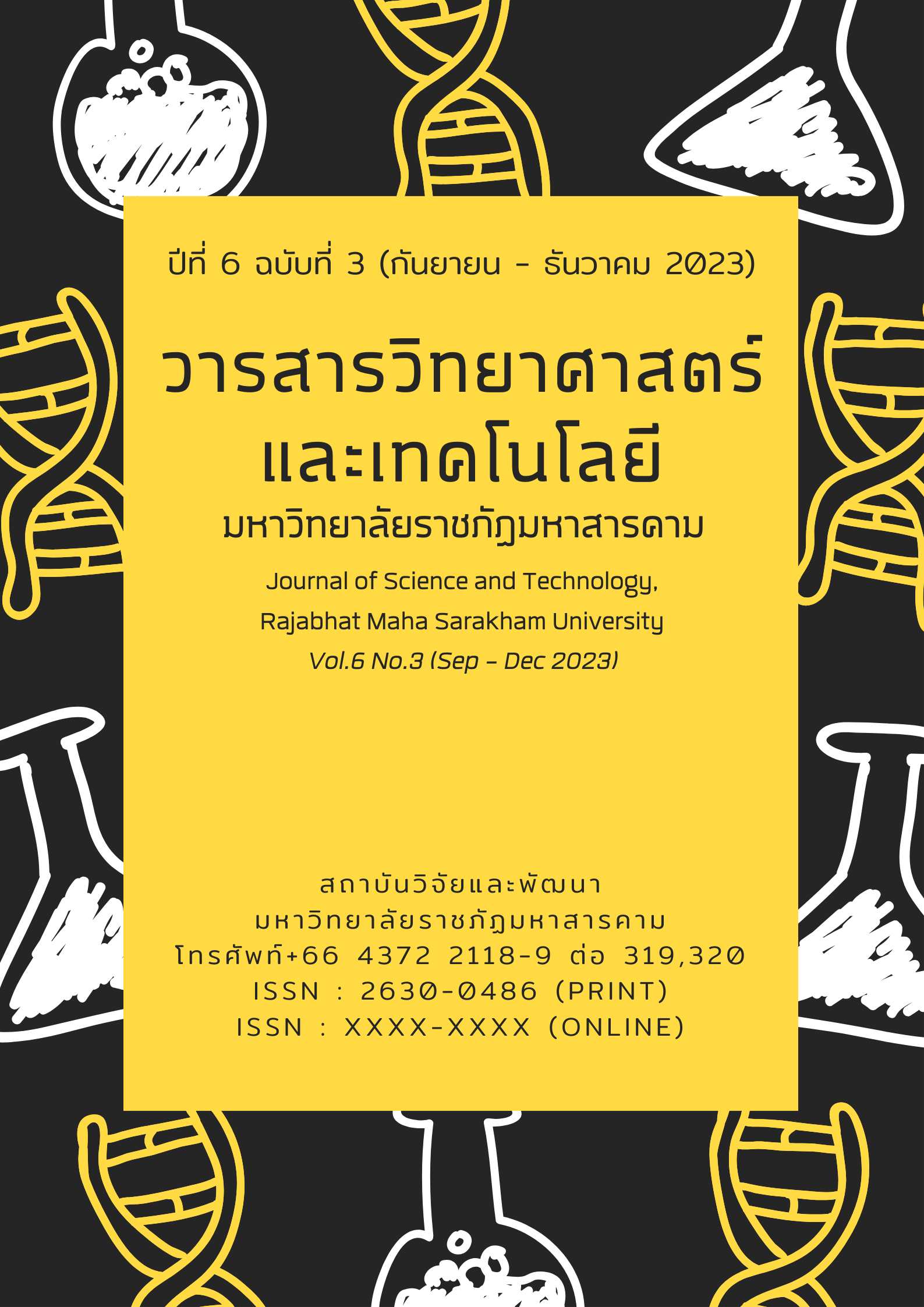Flame retardation added on silk with Polydimethylsiloxane and Diammonium Phosphate
Keywords:
Silk, Polydimethylsiloxane, Diammonium Phosphate, Flame retardantAbstract
This research was to find the appropriate proportions of flame retardation silk with Polydimethylsiloxane (PDMS) and Diammonium Phosphate (DAP), and examine washing durability by measuring contact angle between water drop and silk surface, flame retardation, and to analyze the surface by Scanning electron microscope. Coating materials for silk cloth – Polydimethylsiloxane : Diammonium Phosphate : Deionized water were combined into three different proportions, that is, 10 : 2 : 88, 10 : 6 : 84, and 10 : 10 : 80 by mass respectively. The number codes of each proportion were PD102, PD106, and PD1010 respectively. After that the silk cloth was soaked in coating materials for 1 hour, then was dried out and went thought the drying process at 105 degrees Celsius for one hour, which such discrepancy does not exceed the range of 3 degrees Celsius. At last the silk cloth was washed 30 times.
For the analysis of the surface condition of the silk cloth after coated with Polydimethylsiloxane and Diammonium Phosphate, code number PD1010, before and after the 5th, 10th, 20th, and 30th washing with magnifying power at 50, 500, 5000, and 10,000 times, it showed that the surface of silk cloth was rough before washing, and less rough when washed 5, 10, and 20 times. However, the 30th washing it was found that there was still coated material on silk cloth with smooth, not rough texture. That meant the more the washing the less the coating material, which resulted in efficiency of flame retardation decreased. For standard test of NFPA 701-1 of 10 samples of silk PD1010, it was found that the average of lost weight was 2.63 % and the average time of burning at liquid dropping was 0 second per piece. Lost weight on average at less than 40 % including average time at liquid dropping at 0 second per piece indicated that the silk cloth coated with PD1010 passed the criterion standard. As for durability to washing of silk cloth PD1010, the findings showed that the contact angles on average between water drop and silk surface before and after the 5th, 10th, 20th, and 30th washing were 138.45, 122.87, 122.73, 122.07, and 118.63 respectively. At the 30th washing, the contact angle was between 90 and 120 degree; liquid was forms as a drop so the silk cloth was not wet, which was called hydrophobic surface. However, the contact angles on average between water drop and silk surface before and after the 5th, 10th, and 20th washing were more than 120, which was called super hydrophobic surface. Obviously, the less the contact angel was, the less the flame retardation was.
References
Boonthamsong Korrapin. (2012). Preparation of cotton fabric with flame retardant properties. (1st ed.). King Mongkut's Uniersity Of Technology North Bangkok.
Boonyayut Rachata, Sangsirimongkolying Rassamee and Sakong Phornkamol (2019). The Study of Adding Fire Retardant Property in Natural Indigo Dye Fabric for Indigo Dyeing Community Enterprise. EAU HERITAGE JOURNAL Science and Technology. 13(3). 132-142.
Department of Public Works and Town & Country Planning. (2019). Criteria for evaluating and verifying Fire safety of decorative materials used inside buildings. (1st ed.). Department of Public Works and Town & Country Planning.
Lertkajornsook Panittha. (2010). Flame retardant and antidripping of polyester fabric using diammonium hydrogen phosphate, bentonite and aluminium hydroxide. [Master’s thesis, Chulalongkorn University]. Thailis. https://tdc.thailis.or.th/tdc/search_result.php
P. Zhu, S. Sui, B. Wang, K. Sung and G. Sun. (2004). A study of pyrolysis and pyrolysis product of flame-retardant cotton fabric by DSC, TGA and PY-GC-MS. J. Anal. Appl. Pyrolysis, Vol. 71, pp. 645-655.
Sansuksom Pakkarada. (2018). A Study on Thermal Resistance Efficiency and Flame Retardancy Performance of Cotton Fabric Coated by Synthesis Silica and Silica Derived from Rice Husk Ash. APHETI JOURNALS. 7(2). 71-81.
Wongjaikam Wijitra and Wongsawang Doonyapong. (2016). Improvement of Flame Retardancy of Thai Silk Fabric by Environmentally-Friendly Plasma Treatment Process. Kasetsart Engineering Journal. 29(97). 37-50.



